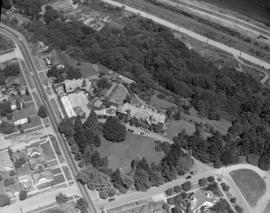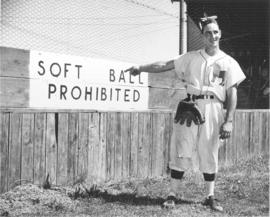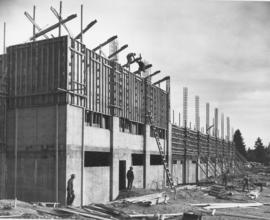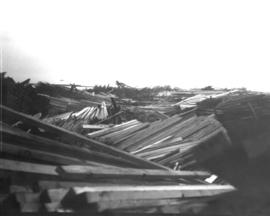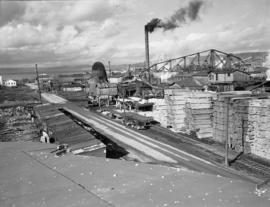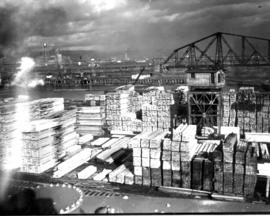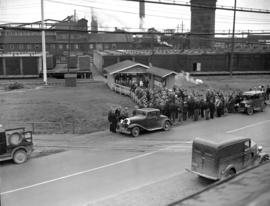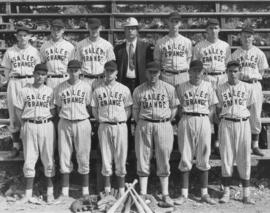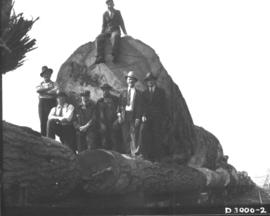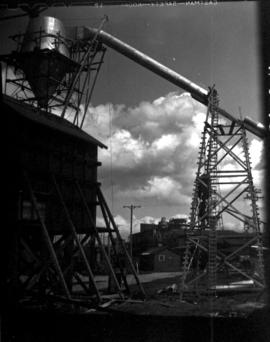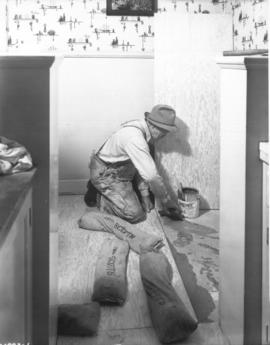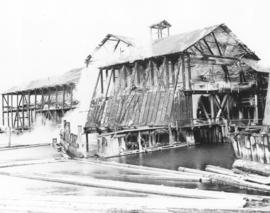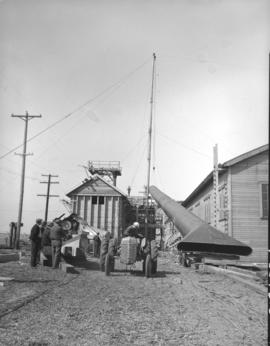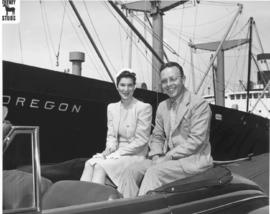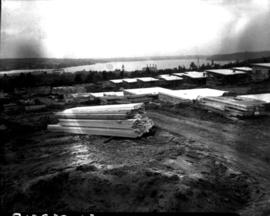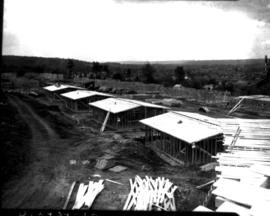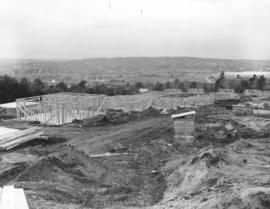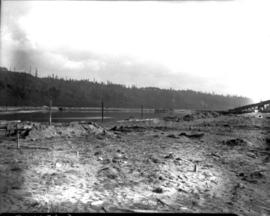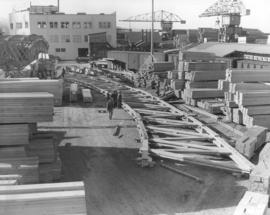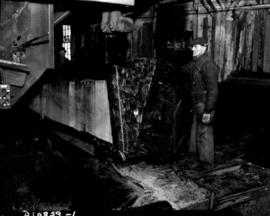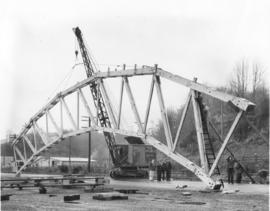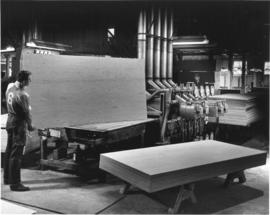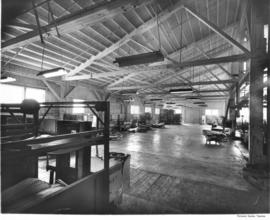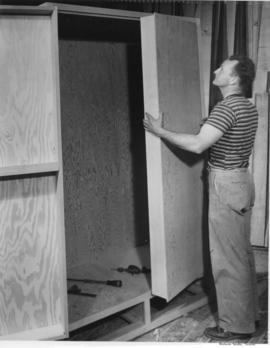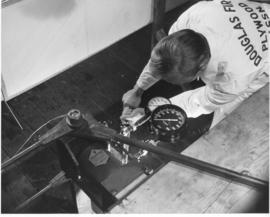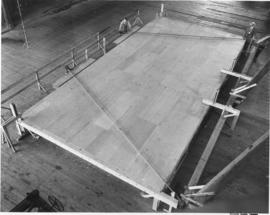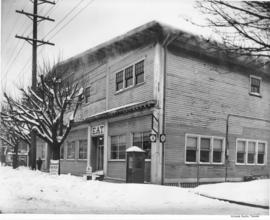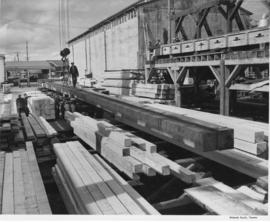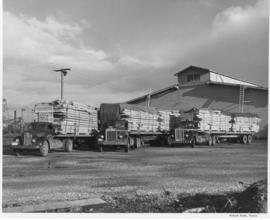- Item
- 1948-08
Part of Richards Studio Photographs
This birds eye view of the old Weyerhaeuser mansion, "Haddaway Hall", at 4301 North Stevens St. and the surrounding area was taken in 1948. By then the estate, which had changed hands several times, was in the possesion of the Dominican Sisters of Marymount, who operated it as a school, Tacoma Catholic College, and as a convent. Completed in 1922, the Elizabethan English Tudor home was built for lumber baron John Philip Weyerhaeuser and his wife Anna. The name comes from Weyerhaeuser's comment that Anna always "had her way," so the home became "Haddaway Hall." The estate consisted of the main house, carriage house, greenhouses and the servant quarters house (now 4224 No. Stevens.) It was surrounded by 8 acres of grounds. The formal gardens were designed by the Olmstead brothers, Frederick Law and Charles, and were brought to life by T.B. Morrow. It was built on the site of the former Allen C. Mason mansion and Whitworth College. It is now the home of the Northwest Baptist Seminary, and is on both the City and National Registry of historic buildings.
Weyerhaeuser, John Philip--Homes & haunts; Haddaway Hall (Tacoma); Estates--Tacoma; Tacoma Catholic College (Tacoma); Universities & colleges--Tacoma;
